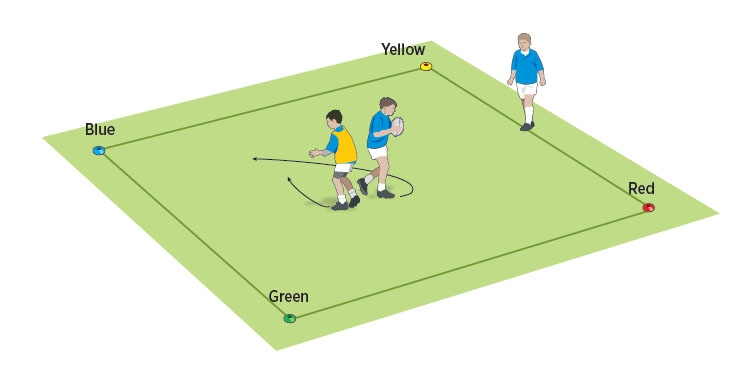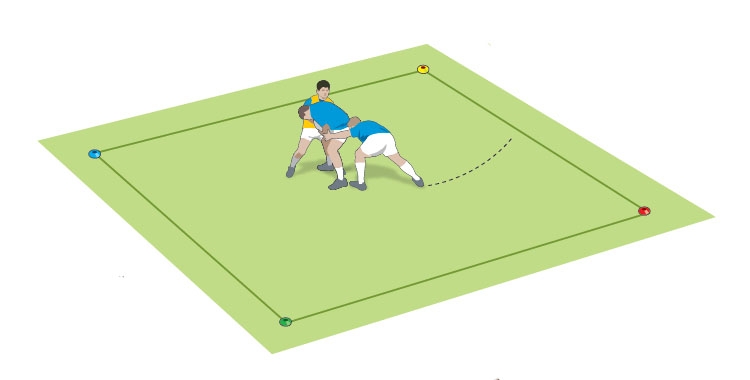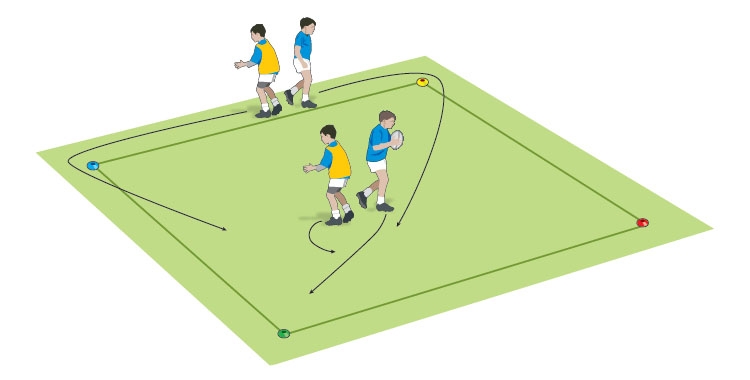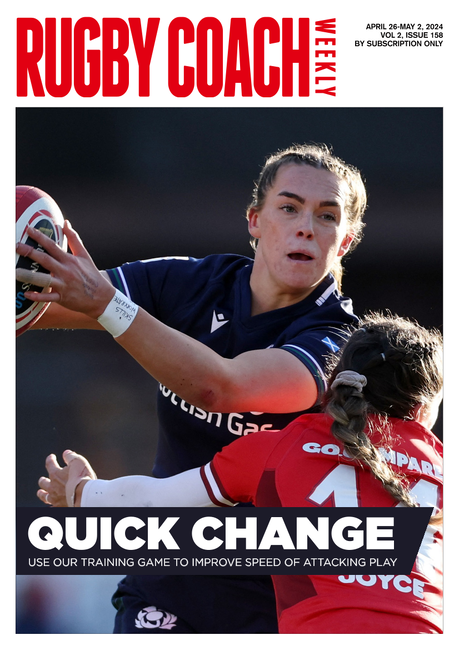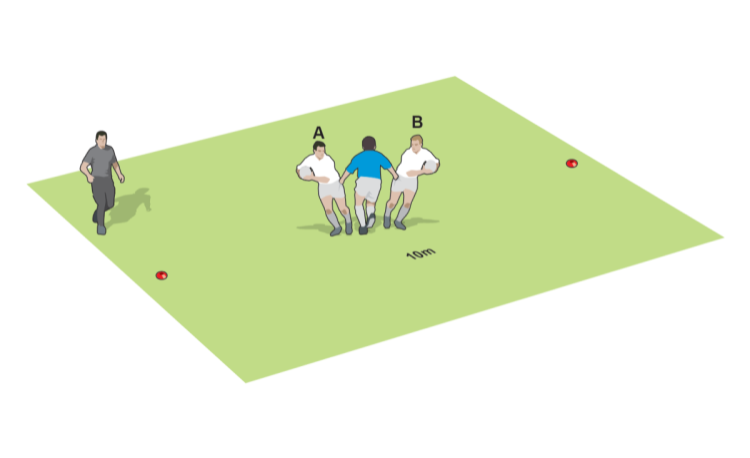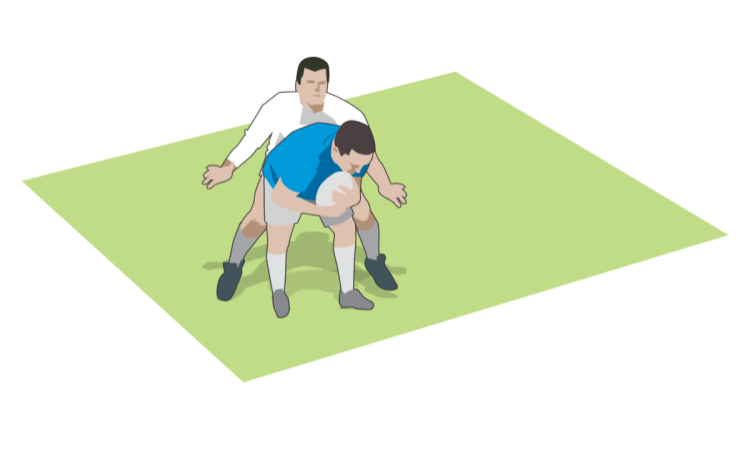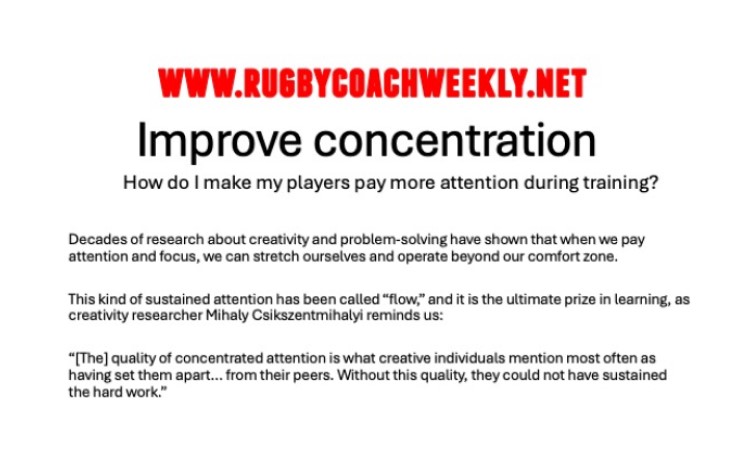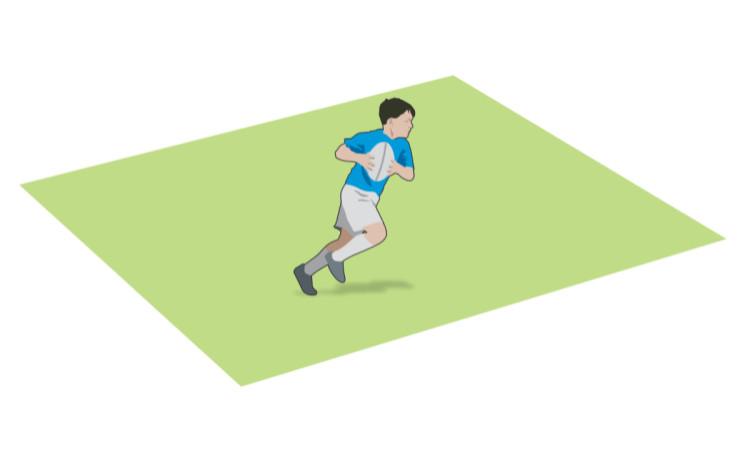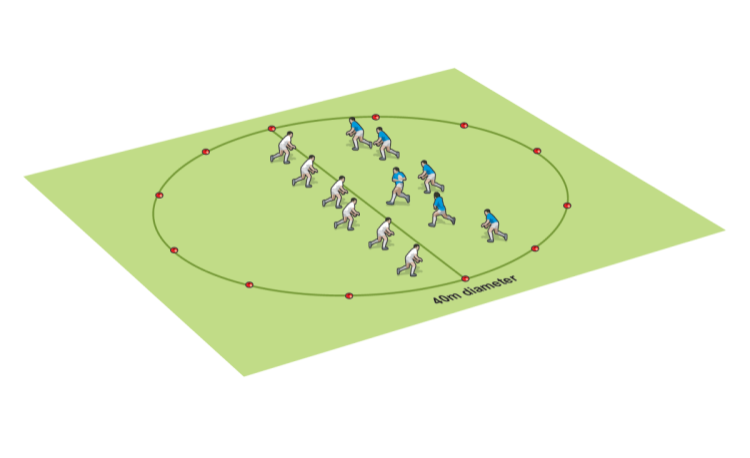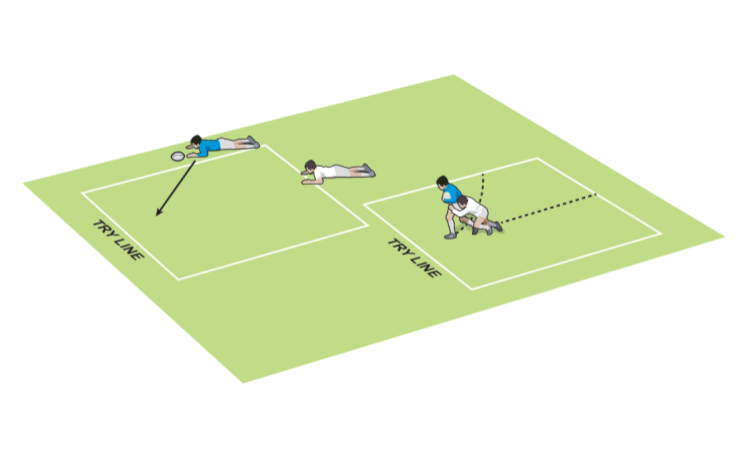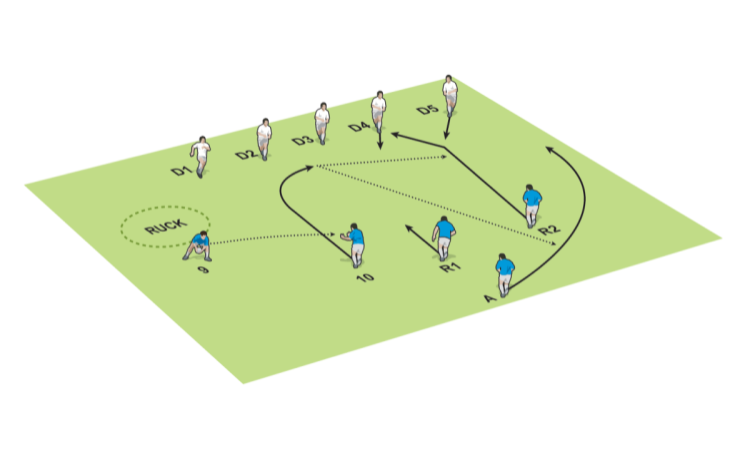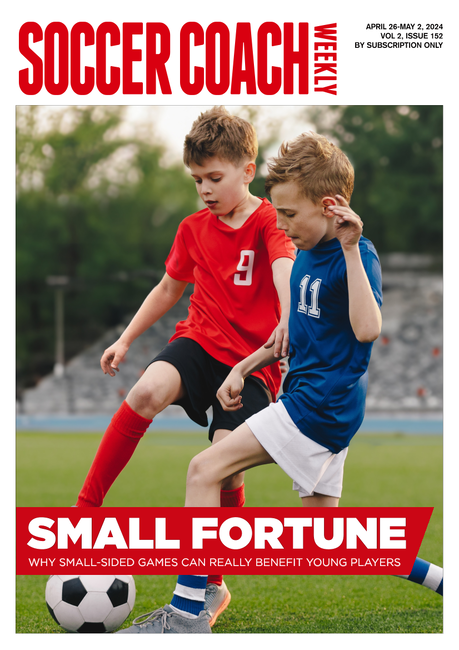You are viewing
1 of your 2 free articles
Support the maul
Contactby Dan Cottrell
U11–U12 | CONTACT 7
Get players driving a maul from ball carrier to support players

With more players, set up more boxes
“Roll the upper body to make yourself more difficult to hold onto”
“Support player, tell the ball carrier what to do – stay on your feet, drive, my ball, go to ground”
Get players driving a maul from ball carrier to support players
- Mark out a 5m square area using different coloured cones on each corner. Put a ball carrier and defender back-to-back about 1m apart in the area. Another attacker faces the ball carrier outside the square.
- Shout which cone the ball carrier should attack, here “blue”. He turns and goes for that cone.

- The defender tries to stop him either by grabbing the ball or tackling. The support player joins the contact situation.
- The ball carrier cannot offload the ball but can have it ripped off him.
- Play until the ball is lost, a tackle is completed and the support player has protected the ball or the ball carrier goes over the cone.
- Develop by adding another defender. He and the support attacker run around the cones in front of them after you call a colour.
You will need
- A 5m square area
- 1 ball
- Coloured cones
- Bibs
Got more players?
With more players, set up more boxes
What to tell your players
“Roll the upper body to make yourself more difficult to hold onto”
“Support player, tell the ball carrier what to do – stay on your feet, drive, my ball, go to ground”
Newsletter Sign Up
Coaches Testimonials

Gerald Kearney, Downtown Las Vegas Soccer Club

Paul Butler, Florida, USA

Rick Shields, Springboro, USA

Tony Green, Pierrefonds Titans, Quebec, Canada
Subscribe Today
Be a more effective, more successful rugby coach
In a recent survey 89% of subscribers said Rugby Coach Weekly makes them more confident, 91% said Rugby Coach Weekly makes them a more effective coach and 93% said Rugby Coach Weekly makes them more inspired.
Get Weekly Inspiration
All the latest techniques and approaches
Rugby Coach Weekly offers proven and easy to use rugby drills, coaching sessions, practice plans, small-sided games, warm-ups, training tips and advice.
We've been at the cutting edge of rugby coaching since we launched in 2005, creating resources for the grassroots youth coach, following best practice from around the world and insights from the professional game.
More from us
© 2023 Rugby Coach Weekly
Part of Green Star Media Ltd. Company number: 3008779
We use cookies so we can provide you with the best online experience. By continuing to browse this site you are agreeing to our use of cookies. Click on the banner to find out more.
